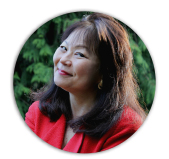 By Deni Luna
By Deni Luna
Anything is possible. That sums up Assunta Ng’s attitude and the newsroom team I was privileged to work alongside during my two-year stint (1994-1996) as editor of the Northwest Asian Weekly (NWAW). In fact, years before I joined the NWAW, I knew Assunta at the University of Washington School of Communications. Even then, she was gracious, composed — and determined. Through the years, I’ve watched her ascend. Fittingly, the name “Assunta” means “ascension.” She received the apt name during her baptism at the age of 2.
I’ve proudly watched Assunta and her publishing ventures ascend. I take great pride in calling the NWAW the nation’s largest pan-Asian English language weekly newspaper. Collectively with a broad-based community, the paper has pioneered so much. In my first day as editor, an international news story landed on my desk, the last stop of a chain of messages and photographs originating in a country where news had to be smuggled out. At great peril, that story came out, a testament to perseverance. Through the years, so many significant stories passed through our quiet offices in the International District (ID).
What great times we had! Yes, 18-hour days were the norm, but we loved our work. I came in at an experimental time. Ethnic newspapers were starting to make their case as smart advertising buys.
Technology was shifting the news business. Minorities were flexing new muscles with political victories. I was proud of all of this.
First, NWAW was second to none in proving that advertising in minority communities pays back. The results were frankly astounding. A Vietnamese marketing manager at the J.C. Penney (JCP) store at Southcenter tracked the ad response with the NWAW. One coupon ad brought in 800 shoppers, spending many times their initial investment. In fact, for each ad dollar JCP spent, they got a whopping $80 in sales back! That’s the power of ethnic advertising done right. I credit Sales Director Mark Shriner, who came in with the goal of doubling sales. Mark actually QUADRUPLED ad sales.
Second, graphic designer Jack Huang was instrumental in giving the paper a sleek look. On the premise that Macintosh computers were the best format for graphics, Assunta did not hesitate to convert the entire newsroom to Macs — a generous move and ultimately, a smart business decision. So much credit goes to Associate Editor Susanne Taylor; writers Fidelius Kuo, John Burge, Gary Huie, Rosalind Mar, Kamile Hruby, Shalin Hai-Jew, Vi Mar, Miyako Nishimura, Jasmine Ee, Takao Kawamata, and many others.
After 20 years, certain things still stand out. My favorite story was published in our 50-year commemorative edition of the end of WWII. Reading the story carries with it memories of my own Japanese American father proudly recalling the motto of the famous 442nd Army Regiment, the most highly decorated unit in U.S. history. The 442nd’s motto was “Go for Broke.” Here’s an excerpt from a moving NWAW article by writer Jasmine Ee:
“In April 1945, the surviving members of the 442nd were sent to Italy’s “Gothic Line,” a series of hilltop fortresses held by the Germans. For six months, the Allies had been trying to dislodge the enemy from their concrete bunkers. In came the men of the 442nd with a daring plan: they would launch a surprise attack by scaling a cliff so steep, the Germans would never think to defend it. Climbing in utter darkness, the soldiers were warned not to make a sound. During that nighttime ascent, several men did fall – silently. Within 36 hours, the 442nd had broken through the Gothic Line.”
I often think of those men who silently fell to their death, careful not to utter a sound. Keeping stories like that alive — in a newsroom dedicated to the principle of ascension over tough obstacles — is a valuable cause worth fighting for, now 35 years and counting.



